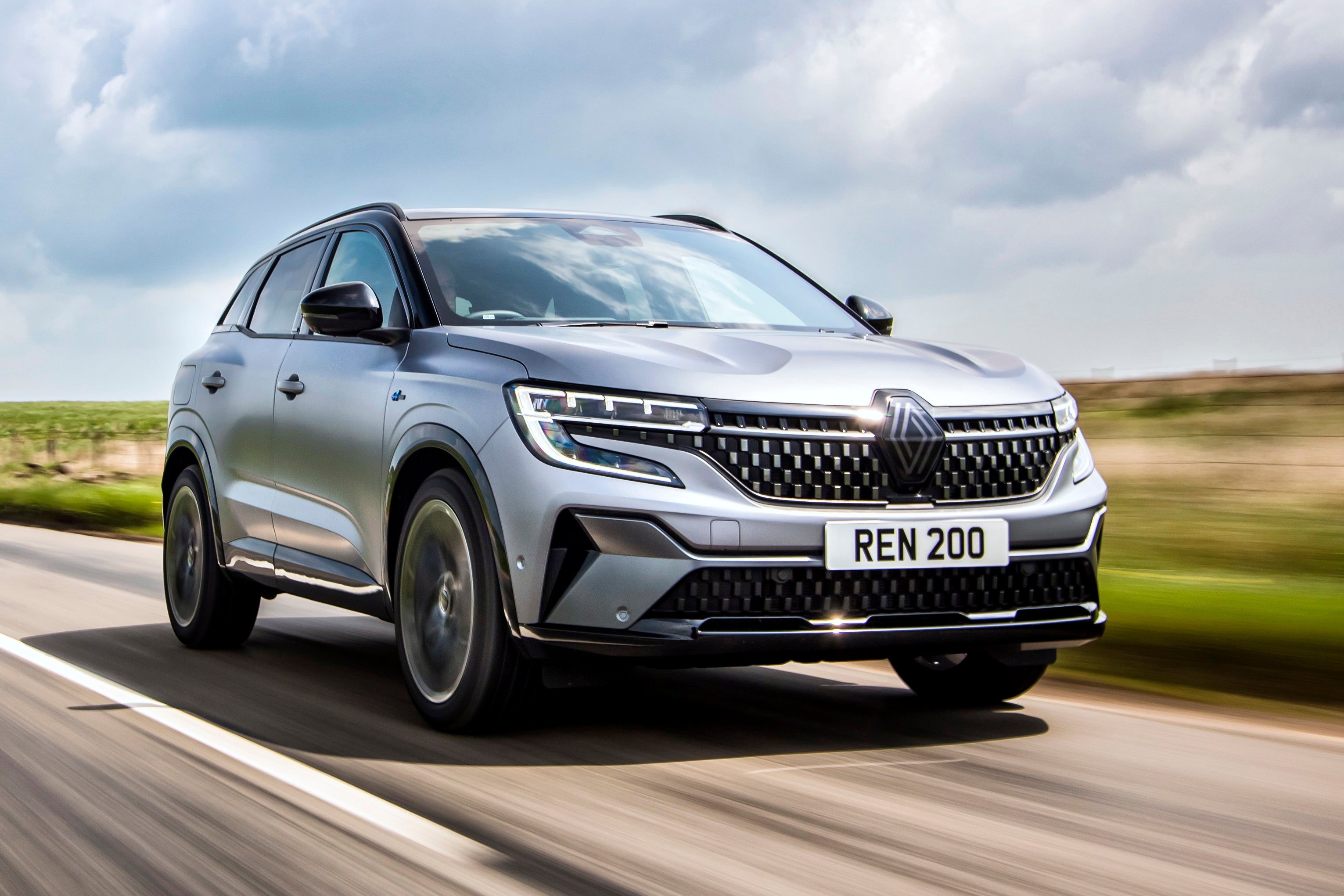Renault Austral Review 2025: Price, specs & boot space
Written by Lawrence Allan
Quick overview
Pros
- Interior a big step forward from the Kadjar
- Hybrid beats key rivals for efficiency
- Optional four-wheel steering is a real USP
Cons
- Alpine branding doesn't make it sporty...
- Complex hybrid gearbox doesn't like to be rushed
- Question marks over the ride remain
Verdict: Is the Renault Austral a good car?
"The Renault Austral replaced the Kadjar as Renault's mid-size SUV, bringing a much classier and more tech-laden interior, efficient new hybrid power and clever features such as four-wheel steering. But is it any good? Find out in our Renault Austral review."
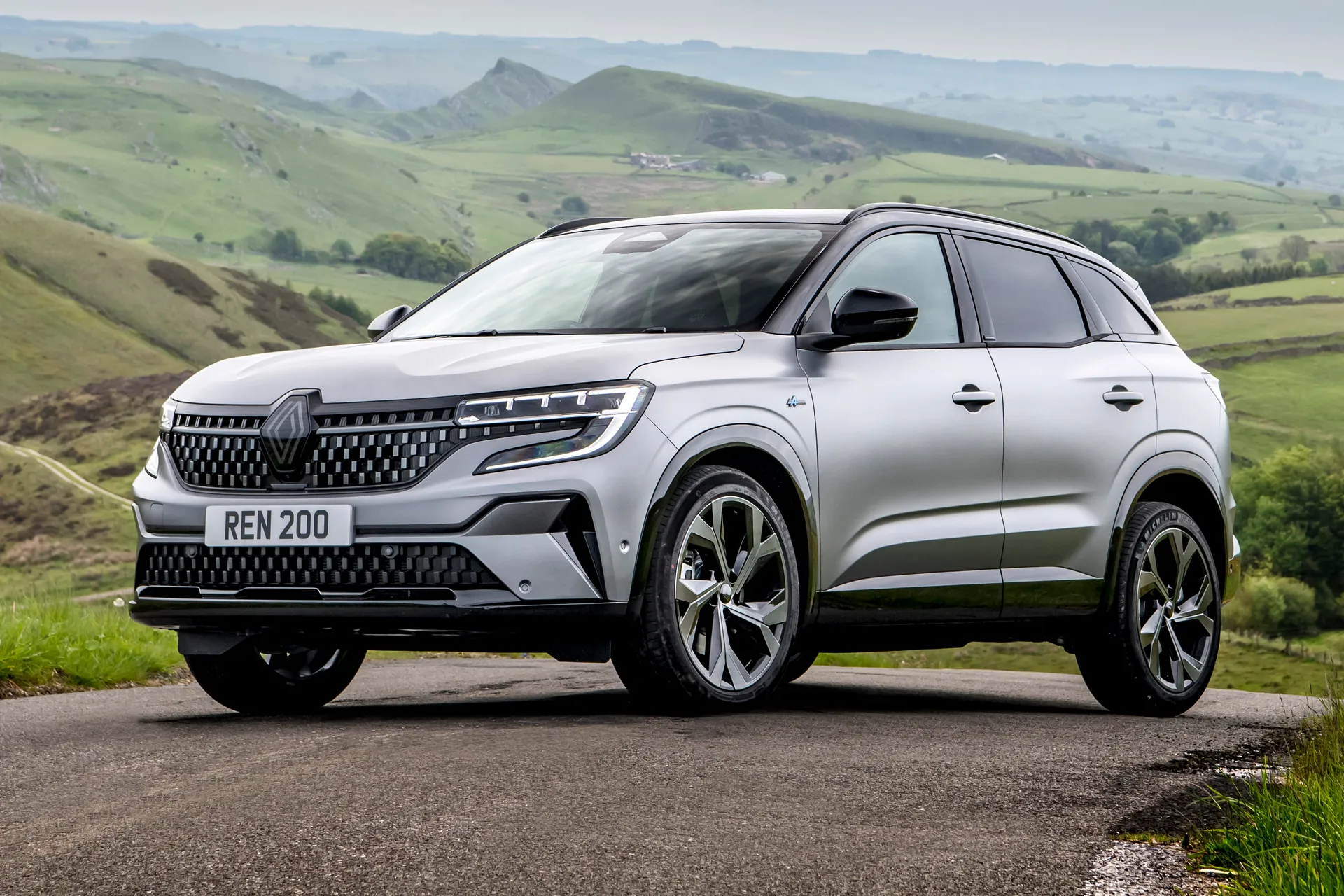
Wondering what on earth a Renault Austral is? No, it isn't Renault's vague attempt to win hearts and minds Down Under. It's actually the French maker undergoing another rebranding of one of its core models. You see, the Austral is the direct replacement for the Renault Kadjar; a family SUV that enjoyed some success but never had the same impact as the platform-sharing Nissan Qashqai. Renault must've also decided the Kadjar name didn't cut the mustard either (we'd agree) as it lasted less than seven years. 'Austral' means 'from the south' in French, with the car being built in Spain, if you were wondering.
So Renault Austral is another name we need to get used to, alongside the now vast array of SUVs at this size and price point that serve as key rivals. Everything from the Ford Kuga to the Volkswagen Tiguan, the Kia Sportage to the Peugeot 3008: every mainstream brand worth its salt is competing in this sector.
To look at the Renault Austral isn't as big a leap away from its predecessor as the name suggests. It's smart and elegant rather than bold and daring. That said, a facelift in 2025 brought sharp new styling that brought the car's looks into line with those of the firm's newer models, including the Rafale.
The interior is a bigger step forward. It's inspired by the new Megane E-Tech electric car, which is a good thing given that has Renault's best interior in a long time. You get a large and responsive portrait-angled infotainment touchscreen using Android software (meaning it works better than most in-house systems), an upmarket look and feel and plenty of standard kit.
You also get a good level of space and practicality from the Austral. It has a good amount of rear-seat space, which can be juggled with boot space in some versions as those seats slide forwards and backwards, with an otherwise fairly large and generous boot.
In terms of engines, you won't find diesel any more, as is the case with any Renault beyond commercial vehicles. In fact, the only powertrain option for UK buyers is a full (self-charging) hybrid system. Branded E-Tech Hybrid (as opposite to E-Tech Electric for the EVs), Renault calls it "the world's most efficient hybrid powertrain", a big statement indeed.
The stats stack up, mind: with up to 200PS the Renault Austral hybrid offers up decent performance, but efficiency is the priority here, with just under 63mpg officially quoted and CO2 emissions that'll embarrass a number of small cars. It also wins the sibling rivalry, with better efficiency on paper than the Nissan Qashqai e-Power.
Driven gently it's pretty smooth and quiet (a darn sight more so than the disappointing Arkana Hybrid), while adjustable regenerative braking via steering wheel paddles is always a nice touch. It doesn't like to be hurried, though, and we can blame Renault's oddly complicated gearbox solution for that: more on that in a bit. Sporty it is not, despite those Alpine badges.
And that's a bit of a shame, because there are some really good bits about the way the Renault Austral drives. The steering is nicely weighted and more accurate than most family SUVs, the handling isn't too roly-poly and Renault offers a '4Control' four-wheel steering system as an option. This makes it more stable at high speeds but increases agility and reduces the turning circle at low speeds, and works well.
We need to try other versions of the Austral on less smooth roads to make a better judgement on the ride, however, because four-wheel steering also brings a different suspension set-up. There's also question marks on the price, because with only the hybrid model available in the UK, starting prices ar3 more expensive than those of a number of rivals that come with cheaper petrol power.
Looking for a used car for sale? We've got 100s of Renault Approved Used Cars for Sale for you to choose from, including a wide range of Renault Austral cars for sale. If you're looking for the older version, you need our Renault Kadjar (2015-2022) review.
Is the Renault Austral right for you?
If you want a family-friendly SUV that doesn't break the bank, but also doesn't look or feel dull or downmarket, then the Renault Austral is a solid buy. The smart design and interior ambience mean it's not far off premium brands in terms of kerb appeal, yet it's practical and should be more affordable. It'll be cheap to run, too.
What’s the best Renault Austral model/engine to choose?
We've only driven one so far, and it's the bells-and-whistles E-Tech Hybrid Esprit Alpine with the 4Control system. That's shown it off in a pretty good light, but it's certainly not the cheapest offering in the class...
What other cars are similar to the Renault Austral?
There is no shortage of SUV-shaped competition for the Renault Austral. Key rivals with similar self-charging hybrid power include the Kia Sportage, Hyundai Tucson, Ford Kuga and Nissan Qashqai, the latter of which has been offered with an 'e-Power' hybrid system from 2022. We'd also include the Toyota RAV4 and Honda CR-V in that list.
Formidable petrol or plug-in hybrid competitors include the Volkswagen Tiguan, Mazda CX-5, Peugeot 3008 and Citroen C5 Aircross. You could also throw in premium brand alternatives such as the BMW X3 and Volvo XC60 if you don't mind splashing a bit more cash, however.
Comfort and design: Renault Austral interior
"The Renault Austral's cabin is a big step forward for the brand, borrowing much from the Megane E-Tech electric car. It's up there with the better cabins in the family SUV class."
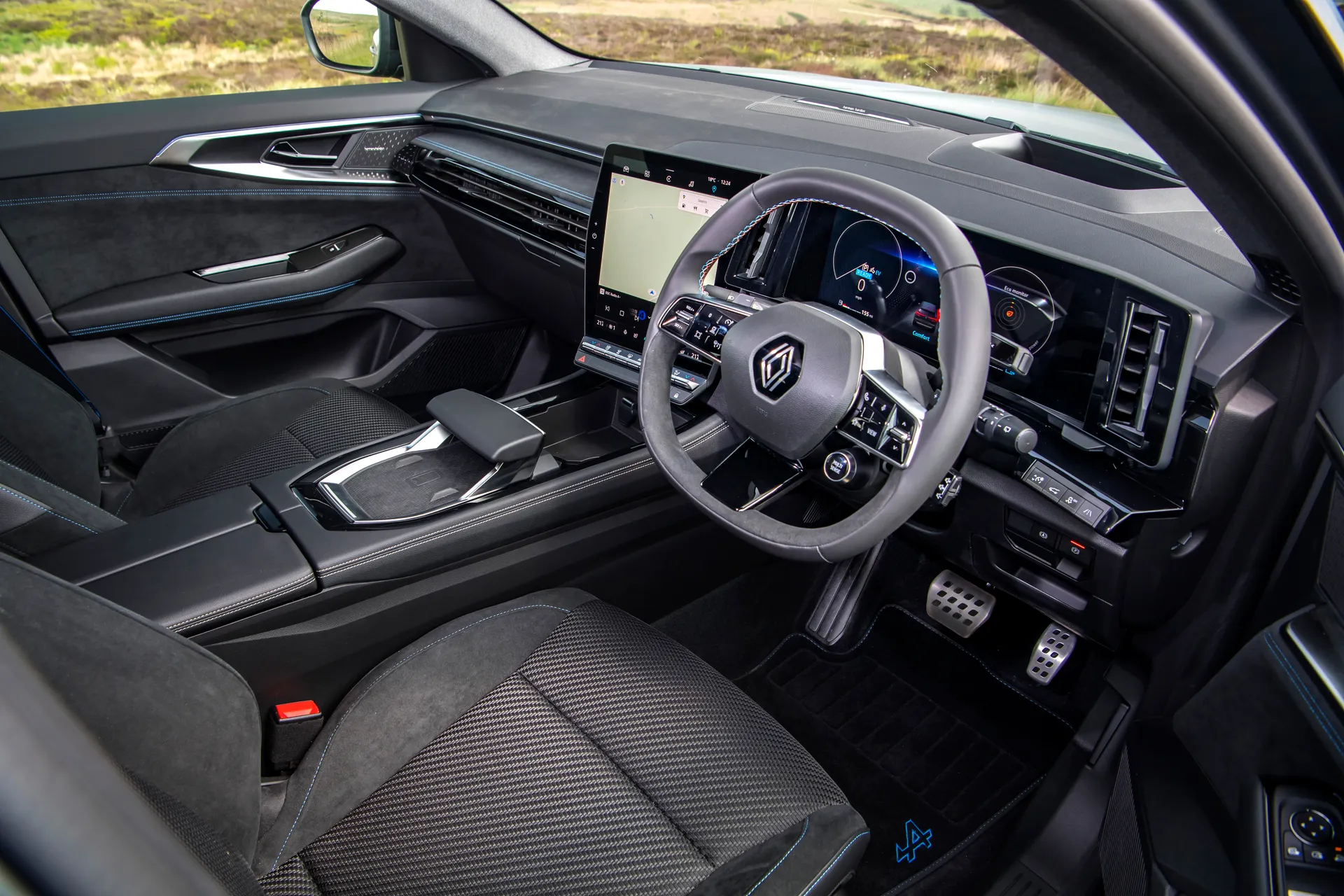
The old Renault Kadjar certainly felt its age inside, with a sea of hard black plastics and a small, laggy touchscreen. How things changed in the Renault Austral.
For starters, the design is much more modern and fresh, with cool ambient lighting, a tempered glass single panel linking the infotainment screen and digital instruments, and a mix of more upmarket materials. We should caveat that by saying we've only driven high-end Esprit Alpine models so far.
Comfort is good, with plenty of adjustment in the seats and steering wheel, although the rather bulky centre console may impede broader drivers and the strange, almost square-shaped steering wheel will be an acquired taste.
Another thing that not everyone will like is that the gearshift is mounted on a stalk coming out of the steering column. There's nothing wrong with that in essence (you can't manually change gears anyway) but Renault has also put the wiper stalk AND the multimedia control stalk in close proximity. Trust us, it'll take some getting used to not to turn the wipers on instead of engaging reverse, or vice versa.
Taking the gearshift off the centre console frees up a novel touch, though; a sliding piece of trim - the 'handrest' - which contains on it a wireless phone charging pad. Moving it forwards or backwards reveals a small stowage space or a pair of cupholders, but the thick handle also doubles as a place to rest your wrist when prodding the touchscreen. We're not convinced it's essential, but it is a neat touch.
Storage elsewhere is pretty good, too, with an armrest that splits and flips up to reveal a chunky area for chucking sweets or other travel items, and some decent-sized door bins front and rear. There's also a sunglasses compartment above your head, deep pockets in the back of the front seats and a good-sized glovebox.
Quality and finish
The Renault Austral's fit-and-finish feels good, and far exceeds that of the old Kadjar. Everything feels solid to the touch and built to last, bar the odd cheaper bit that reminds you it's not a premium SUV.
The material quality is impressive given what Renault was turning out just a few years ago: at least on our high-spec test models. There's soft-touch trim in all the places that need it, and overall finish is on a par with Hyundai and Volkswagen. Open-pore wood veneer and Nappa leather is also available.
Another nice touch is that the LED ambient lighting can automatically change colour every 30 minutes, apparently based on the human body's circadian rhythms. Of course, you can change them yourself through 48 different colours, while the display colours change depending on your chosen drive mode.
Infotainment: Touchscreen, USB, nav and stereo in the Renault Austral
This is another real area of improvement for the brand. You only have to look at the rubbish infotainment system in the Alpine A110 for an idea of where Renault sat in the hierarchy of touchscreens only a few years ago. But things have been getting better in new models, culminating in this impressive new system.
All Austral variants come with a pair of screens: a 12-inch portrait-oriented touchscreen in the centre of the dashboard for infotainment, and a 12.3-inch landscape-oriented digital instrument cluster.
The new system uses Google-designed software, which is a real boon. We wish more manufacturers would give up trying to design their own systems and just buy in better software from tech companies. The graphics are bright and smart, the screen response is fairly quick and consistent, and there's a host of features including 35 apps ( a few more on top after the 2025 facelift). While Apple CarPlay and Android Auto are of course included, you might not need them, as the built-in navigation is taken care of by Google Maps. Nobody does it better, so why not?
There's also a Google-based voice control system, which means it actually works. And while some of the touchscreen elements are more fiddly than physical switchgear, you do get both virtual and physical shortcut buttons along the bottom of the screen.
The digital dials are pretty smart with a variety of displays, including a smart Google Maps screen, various dial and info combinations, and a Tesla-style option, which shows the car driving within its lane. In traffic, this will faithfully recreate the different types of vehicle that surround you, and show how the active assist systems are working.
Further to that is a large 9.3-inch head-up display, which is pretty clear and info-packed. All-in-all, it's claimed that the Austral has the largest display area in total in the SUV market, and we can believe that.
There are four USB-C charging points - two in the front, two in the rear - while high-end versions come with a 410W, 14-speaker sound system upgrade.
Space and practicality: Renault Austral boot space
In terms of exterior dimensions the Renault Austral is 4510mm long, 1843mm wide (with mirrors folded) and 1644mm tall with roof bars. That makes it a good chunk longer, slightly wider and slightly taller than the Nissan Qashqai.
Up front, there are no issues with headroom, even with the panoramic glass roof fitted to our test car. Legroom ias also good, although some taller or wider occupants might find the broad centre console impedes on leg space. The seats themselves offer good overall comfort. These were replaced during the 2025 facelift for even more supportive ones.
In the rear, legroom is more generous than the class average, helped by the sliding rear seat bench (optional on some trims in earlier cars, but later made standard throughout the range). This allows you to juggle the space available between legroom and boot space. With the bench pushed all the way back, the Austral has more generous legroom than many key rivals, although headroom isn't the best, particularly with the panoramic sunroof fitted.
The Renault Austral's boot space is 487 litres with the rear bench slid all the way back, but sliding it to the forwardmost point of its 16cm travel increases capacity to 555 litres, but obviously, this makes rear legroom rather tight. Ordinarily, you'll probably set the seats somewhere in between their extremes.
Handling and ride quality: What is the Renault Austral like to drive?
"The story of what the Renault Austral is like to drive is a head-scratchingly complicated one. That's because the car has been offered with various different suspension and steering systems during its time on sale, and we only ever got to drive one arrangement, which handily, is no longer offered at all."
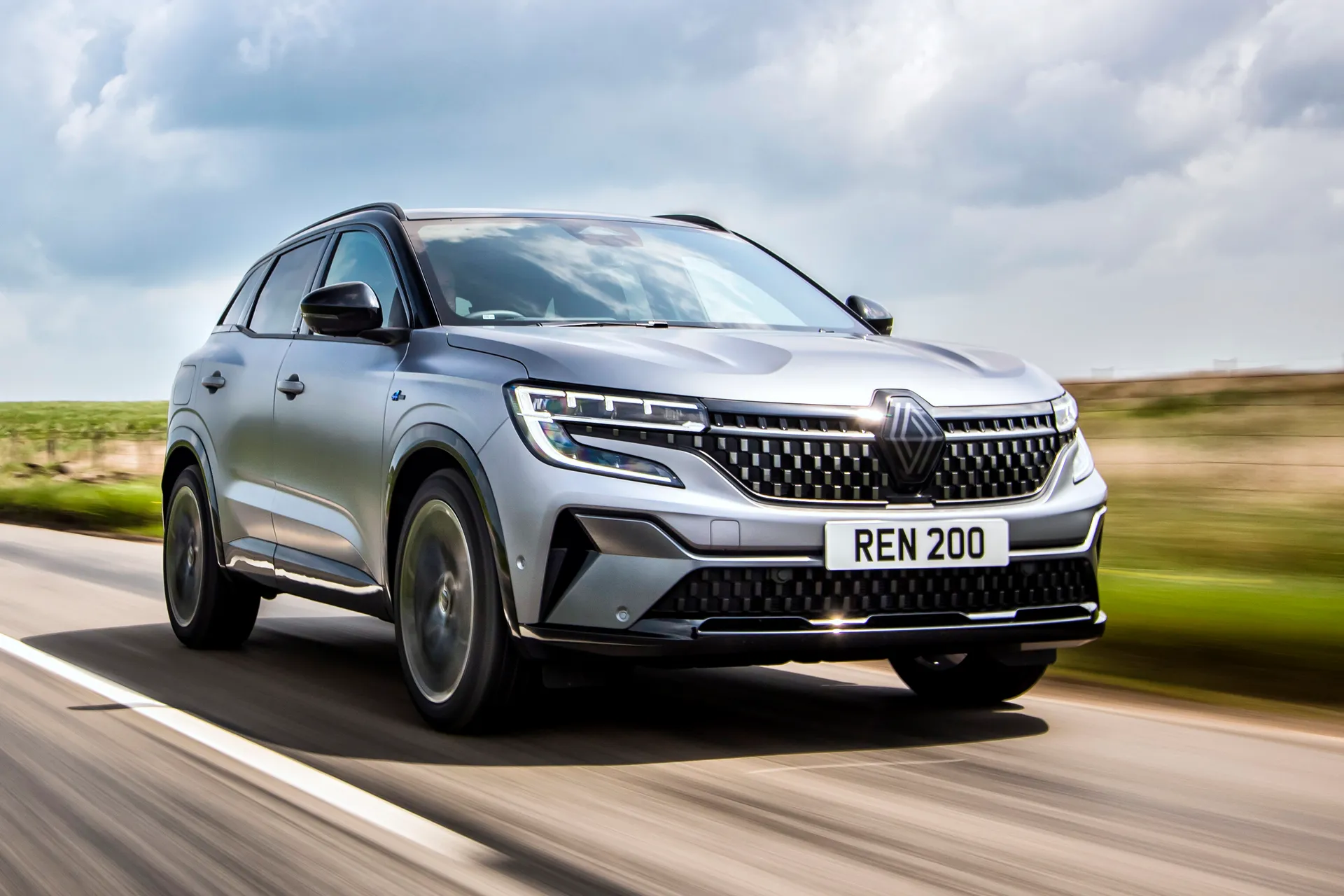
When it first went on sale, the entry-level car got a regular steering system and a basic torsion beam rear suspension, but we never got to try this system. All other versions came with Renault's '4Control' four-wheel steering system, along with a more sophisticated multi-link rear suspension arrangement. This is the one we got to try, but only ever on super-smooth Spanish roads, rather than on the pock-marked surfaces of the UK.
The four-wheel steering system is a clever bit of kit. Essentially, it turns the rear wheels - but only up to five degrees - in the opposite direction to the fronts at low speeds in order to tighten up the turning circle and aid manoeuvrability. At higher speeds, the rears turn in the same direction as the fronts to aid stability.
On paper, this reduces the turning circle from 11.2m on the standard car to just 10.1m, and in the real-world it means the Austral is a doddle to drive around town. That turning circle is actually less than a Renault Clio's, making U-turns a breeze. Visibility is pretty good, too, thanks to the raised driving position.
The 4Control system also helps the car feel fairly agile and keen when you turn into a bend. Sometimes these systems can feel a bit weird at speed, but Renault has made it feel fairly natural, so you have confidence that when you chuck the Austral into a bend, it'll change direction swiftly and hold its line. Grip seems decent enough, too, and the body doesn't wallow about or feel unsettled. We also like the direct, well-weighted steering.
However, because our only experience of the car took place on smooth, undemanding Spanish tarmac, we can't really give you chapter-and-verse on the ride quality. It felt fairly settled - although not totally, with some of the minuscule bumps we found being felt in the cabin - but UK roads present a much sterner test.
Unfortunately, if you're looking to buy a brand new Austral, we're even more in the dark. Later on, during the car's 2025 facelift, the four-wheel steering was withdrawn from the UK market, leaving only the standard car with the more basic suspension that we never had the opportunity to try. It wouldn't make a difference if we had, mind, because the facelift also brought new suspension dampers that will have had an effect on the car's behaviour. And guess what? Yup, we haven't had a chance to try the latest setup yet. Once we do, you'll be the first to know.
What engines and gearboxes are available in the Renault Austral?
There's a bunch of engine options in the Renault Austral for European customers, but UK don't get a choice, because only one is offered, the Renault Austral E-Tech hybrid. This uses a 1.2-litre three-cylinder turbo engine but also mates it to a 68PS electric motor and 25PS high voltage starter-generator. There's also a 2kWh battery pack in the mix, which is bigger than in most self-charging hybrids. The overall power output of the system is 200PS.
The E-Tech hybrid is front-wheel drive and power goes through a 'multi-mode' clutchless gearbox. Explaining how this works is fiendishly complicated, but basically there's a four-speed gearbox combined with two gears in the electric motor, which allows 15 different driving modes/gear speeds in total. There's no clutch, because it's a 'dog' 'box: instead there's a series of electric actuators.
Sounds complicated? It feels it, too. Around town it's fine, pulling away in electric mode with uncanny smoothness and very little noise. Gentle cruising at higher speeds also keeps you in electric mode: officially it'll do this up to 62mph, but we found it possible to run even higher speeds with the engine off.
When the engine kicks in, it's not too intrusive despite being a thrummy three-cylinder - the noise and vibration is less present than in the Arkana, for example - but you do notice it. The main issue is when you're accelerating more than gently, because the gearbox seems incredibly sluggish to react and choose the correct gear. It'll either hold onto revs for too long or not kick down when you expect it. It all feels rather gloopy and unsatisfying.
Basically, the faster you go in the Austral Hybrid, the worse it gets. Still, most family-focused SUV owners aren't going to be pinning the throttle on a regular basis, so it's mostly fit-for-purpose.
Refinement and noise levels
The Renault Austral we tried was pretty quiet and smooth when pottering about or maintaining a cruise. The engine doesn't drone in the background or intrude, but the faster you go the more you notice some intrusive wind noise from around the door mirrors.
Rev the engine out and its three-cylinder tone is noticeable, but it's not annoying like the engine in the Arkana hybrid. We still think hybrids such as the Nissan Qashqai e-Power are a bit smoother, however: Renault's engineers admit they traded some smoothness for efficiency in the Austral hybrid.
Road noise was pretty well isolated - even on 20-inch wheels - although the silky-smooth Spanish roads we drove on didn't provide too much of a test on that score.
And again, the refinement picture will have changed since the 2025 facelift, because extra soundproofing was added around the doors and under the bonnet. Again, once we've experienced the newest iteration of the car, we'll update this review to let you know more.
Safety equipment: How safe is the Renault Austral?
When it was crash-tested by safety body Euro NCAP in 2022, the Renault Austral was awarded the maximum five-star rating.
Standard safety equipment is plentiful. Active safety includes lane keeping assistance, lane departure warning and blind spot monitoring, while there's front- and rear autonomous emergency braking. Of course you get an emergency 'e-call' system that'll notify the emergency services in the event of a crash, along with three Isofix mounts for child seats (two in the rear, one in the front passenger seat).
Further kit includes rear cross-traffic alert and an Occupant Safe Exit system, which will warn the driver if they've opened the door in the path of another vehicle, motorbike or cyclist.
All versions get some variety of adaptive cruise control, but the top trims get a more sophisticated system that will keep you centred in your lane.
MPG and fuel costs: What does a Renault Austral cost to run?
"The Renault Austral E-Tech Hybrid is the most efficient car in its class on paper."
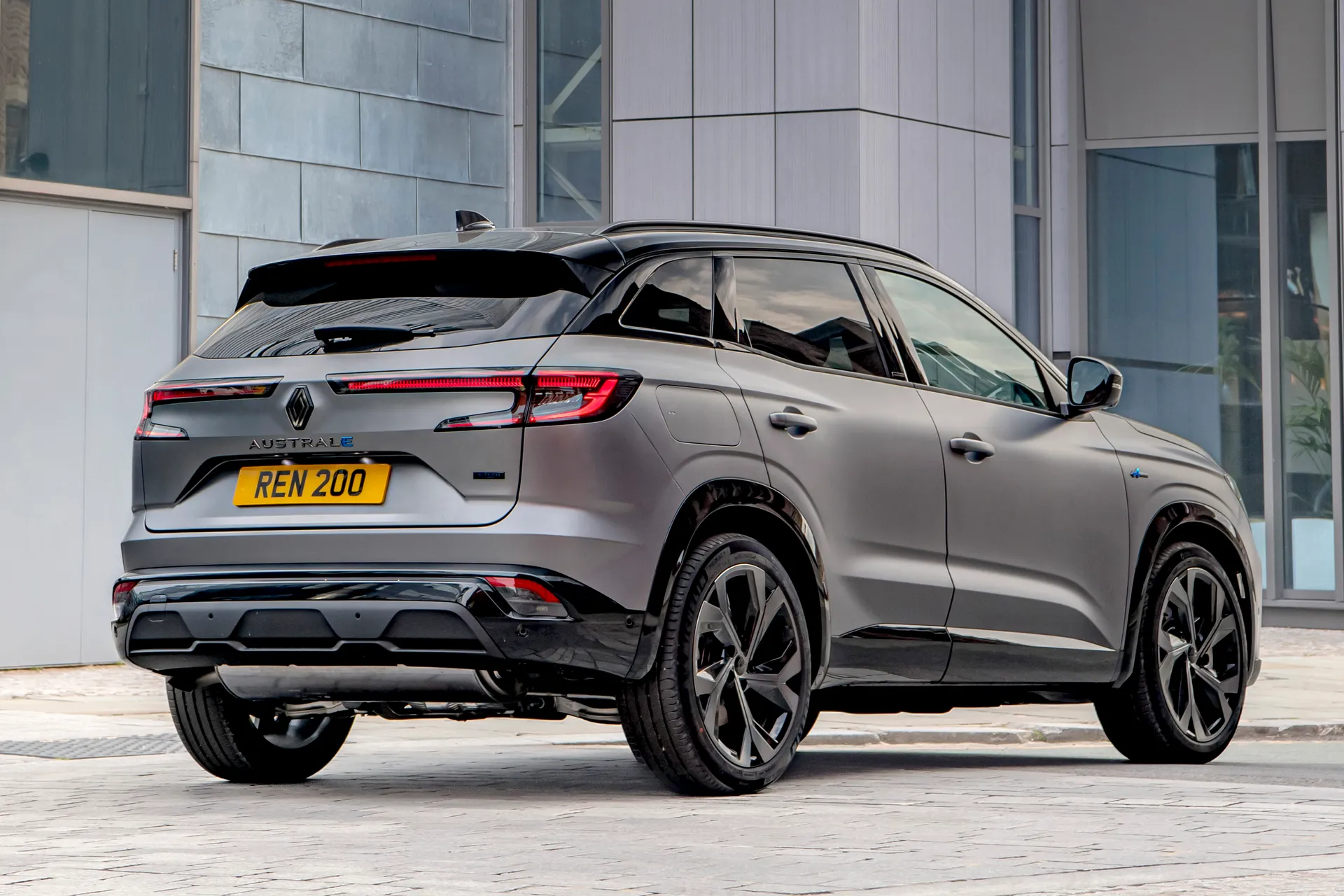
Renault's claim that the Austral E-Tech has "the world's most efficient hybrid powertrain" is a punchy one. It really depends how you use it, as a plug-in hybrid will use a lot less fuel if you plug it in regularly and keep your journeys short.
However, a plug-in hybrid will be quite a lot thirstier once the battery is out of juice on a longer journey. This is where self-charging hybrids like the Austral come in, as they'll get a more consistent real-world figure in every situation. And as self-charging hybrids go, the Austral beats all of its key rivals on paper.
Officially, the car will do 61.4mpg, while CO2 emissions are just 104g/km. That's a whole heap better than the Kia Sportage hybrid (49.6mpg) and also smashes the related Nissan Qashqai e-Power (53.3mpg). Those CO2 emissions mean the Austral E-Tech will also be an appealing company car, although not as appealing as a PHEV or EV.
Renault Austral reliability and warranty
Renault as a brand didn't do that well in the latest HonestJohn.co.uk Satisfaction Index, managing 24th place in the reliability standings out of 33 brands. However, no Renaults feature in the list of the bottom 20 cars in the study, while the Captur managed to break into the list of the top 20 most reliable cars. There's not much that's mechanically shared between that car and the Austral, but anecdotally, we're hearing reliability has improved in recent years with newer Renaults.
The warranty is disappointing, mind. Where once Renault provided a five-year, 100,000-mile warranty as standard with its cars, that offering has now been pared back to two years of unlimited-mileage cover, with a third year limited to 60,000 miles. That pretty much the minimum you get on any new car these days, while rivals from Kia and Toyota provide seven- and ten years of cover.
Renault Austral insurance groups and costs
Insurance groups for the Renault Austral range between 21 and 24, depending on the trim level.
VED car tax: What is the annual road tax on a Renault Austral?
All cars built since April 2017 now pay a flat rate of tax regardless of what sort of fuel they're powered by, and that flat rate currently stands at £195 per year.
Cars that cost over £40,000 when brand new also incur a 'luxury car surcharge', which adds several hundred pounds to your outlay for a temporary five-year period. Currently, no version of the Austral breaks that barrier, even if you spec it up with options. However, the range-topping version gets jolly close, and with prices constantly on the rise, that may not always be the case, so it still pays to be careful.
Renault Austral price
"Pricing for the Renault Austral starts at around £34,000 for the most basic version, rising to around £39,000 for the range-topper, with the mid-range version sitting at around £37,000."

However, considerable savings can be made if you buy a used example instead of a brand new one. Prices in the heycar classifieds start at around £23,000, and that's for a 2023 car with around 20,000 miles on the clock.
If you must have a facelifted car, then as-new preregistered examples with single-figure mileages can be had for two or three grand less than a factory ordered one, and you won't have to wait for it to be built and shipped. We're not sure why you would, though, because the facelift wasn't all that comprehensive - apart from visually, that is - and hardly any optional extras are available (paint colour and a space-saver spare wheel is about your lot).
Trim levels and standard equipment
Three trim levels are offered in the Renault Austral range: Techno, Techno Esprit Alpine and Iconic Esprit Alpine.
We think that the entry-level one is packing enough luxury kit for most buyers. I comes with 19-inch alloy wheels, the full twin-screen infotainment setup, a six-speaker Arkamys sound system, all-round parking sensors, a reversing camera, a synthetic leather steering wheel, wireless phone charging, fabric upholstery, the basic-level adaptive cruise control, heated- and power folding door mirrors, and interior ambient lighting.
Upgrade to the Techno Esprit Alpine, and you get 20-inch alloys, the head-up display, heated front seats and steering wheel, a powered driver's seat with massaging function, a handsfree powered tailgate, LED matrix headlights and the more advanced adaptive cruise control system.
The top-spec Iconic Esprit Alpine adds a Harman Kardon audio system, 360-degree cameras, a panoramic sunroof, and a handsfree parking function.
Ask the heycar experts: common questions
Is the Renault Austral electric?
What is the price of the Renault Austral?
Is the Renault Austral a seven seater?
Get our latest advice, news and offers
Keep me updated by email with the latest advice, news and offers from heycar.
By submitting you agree to our privacy policy
